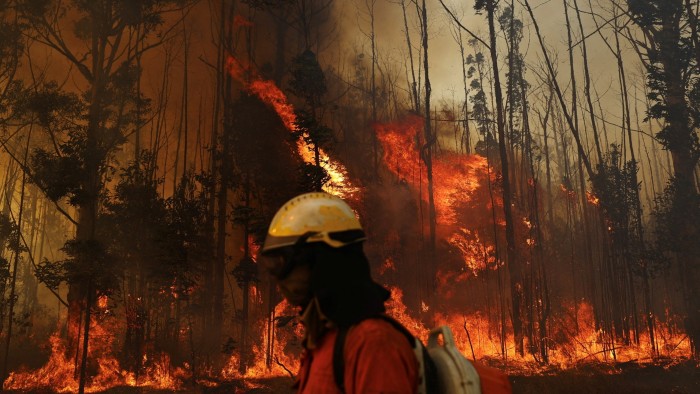Ministers and negotiators are gearing up for the toughest climate talks in almost a decade as representatives from nearly 200 countries meet in Baku this week, charged with agreeing a new finance target for tackling climate change.
Countries at the UN COP29 climate summit in Azerbaijan are due to replace a goal initially agreed in 2009. Back then, developed nations pledged to provide $100bn annually in climate financing for developing countries by 2020, a target they met two years late, according to the OECD.
The replacement target — the New Collective Quantified Goal, or NCQG — is viewed as critical for financing efforts to limit global temperatures to 1.5C above pre-industrial levels, the lower limit set by the landmark 2015 Paris accord. It will help ensure countries can afford to shift to greener economies and deal with the impact of climate change.
But huge divisions have emerged between countries in preliminary talks over the goal, with clashes over how much it should be, how it should be structured, and who should pay.
“It is going to be the most challenging negotiations since Paris, because it is about money,” says Eamon Ryan, Ireland’s environment and climate minister.
Michai Robertson, lead negotiator on climate finance for the Alliance of Small Island States (Aosis), believes the Paris agreement is under the “greatest threat” it has ever been. Countries set a “really ambitious goal in terms of action” in 2015 but failed to address how to finance it for almost a decade, he says.
Last month, the UN Environment Programme warned that the world’s ability to remain within the target of 1.5C “will be gone within a few years” without rapid action, with the world on course for a “catastrophic” temperature rise of more than 3C above pre-industrial levels.
Many developing nations have called for a new finance goal of at least $1tn per year, warning that they cannot be expected to take on more debt to deal with climate change for which they are largely not responsible. They want developed nations, as the chief culprits for historical emissions, to pay up.
But rich nations, just a few years after their own budgets were stretched by the pandemic and energy crisis, are reluctant to commit to large grants — especially after they struggled to meet the initial $100bn-a-year goal.
$1tnAnnual financing target some developing nations have called for
Instead, rich countries have pushed for an expansion of the so-called donor base — the countries expected to contribute. Under long-standing UN classification, countries such as Saudi Arabia, the United Arab Emirates and China are considered developing nations and are not included.
But widening the donor base is not straightforward, says Robertson, who points out that, under some suggested metrics for expanding it, some vulnerable small islands might end up being required to pay while China could avoid doing so.
The negotiations are taking place against a backdrop of rising climate shocks, with large parts of South America dealing with droughts while Spain grapples with devastating flash floods.
Ryan says that, while there is a need to increase public finance, the EU is pushing for a “layered” finance goal, whereby a core segment of public finance would be supported by private investments.
The Arab Group of countries has called for a target of $1.1tn per year between 2025 and 2029, of which $441bn would come from public finance to help drive private investments.
A report from the Energy Transitions Commission think-tank also says different types of climate financing are needed, including capital investments averaging about $3tn a year until 2050 to create green energy systems, which, it argues, would be largely financed by private institutions, including some backed by multilateral development banks (MDBs).
But the report adds that up to $950bn — from grants from rich countries, domestic resources or financing from MDBs — will be required for three other areas: mitigating emissions in specific areas that might not generate returns, such as the early closure of coal plants; investments in adaptation such as coastal defences; and dealing with loss and damage caused by climate change.
In middle- and low-income countries, those costs of covering loss and damage might reach $200bn-$400bn a year by 2030, according to a 2022 report by the Grantham Institute.
Robertson argues the key focus in Baku needs to be on “provision finance”, such as grants and concessional finance, rather than on private funding.
Ali Mohamed, Kenya’s special envoy on climate and chair of the African Group of Negotiators on Climate Change (AGN), also says it is crucial for African countries that any goal agreed must not “not worsen our debt situation”.
The continent is “bearing the brunt of climate shocks”, while also shouldering an unsustainable debt burden that is hindering “the ability of African countries to achieve their climate and development goals”, he adds. The AGN has called for a finance goal of at least $1.3tn a year to meet their climate targets and prepare for extreme weather events.
For now, few negotiators have high hopes. Some say they fear Donald Trump’s election win will be used by fossil fuel-producing countries to derail the talks. In October, Azerbaijan’s lead negotiator, Yalchin Rafiyev, said a realistic goal for what the public sector could directly provide and mobilise was likely in the “hundreds of billions”, even if trillions were needed.
Several negotiators say more work is needed on the finance goal ahead of COP30 in the Amazonian city of Belém in 2025. “Not all of it will be agreed in Baku. We will have to set some things up for Belém,” says Ryan.
Read the full article here

